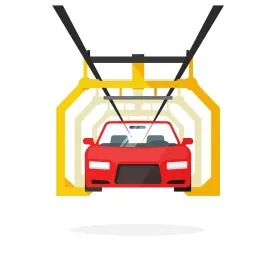Elevated warranty expenses for Original Equipment Manufacturers (OEMs) are expected to continue in 2018, and automotive suppliers can expect to continue paying a greater per-vehicle share of these expenses. Because OEM purchase orders and corresponding terms and conditions contain highly OEM-favorable language, exceptions and limitations to supplier warranties are difficult to negotiate.
Warranty risk management should start at the contracting phase. Specifications to which the product is to be designed and/or manufactured should clearly be set forth in the contract documents, and any inapplicable warranties, including those outside the scope of design responsibility, should be disclaimed. Consider documenting suggested alternative designs for a more robust or superior performing product that is declined by the customer. Additionally, the key documents relating to product testing and acceptance criteria, as well as to which party is responsible for which level of testing, also should be preserved and readily accessible in the event of a dispute. Finally, additional protection from warranty risks should be considered during the contracting phase through the use of contractual provisions relating to insurance, indemnification, and dispute resolution.
If a warranty issue arises, the supplier needs to react quickly to identify the root cause(s), contain the problem, and establish clean points (the exact points in the production stream that the product was the last known to be conforming). Determine protocols for analyzing root causes for dealer repair codes that could implicate the product. Also establish an express protocol for handling warranty claims, including product return and inspection, and for determining the root causes for the failure. The supplier must also understand the warranty period that will apply to the product, when the warranty period will begin to run, and what obligations the supplier has under the warranty claim.
If the claim involves multiple parties, the tier 1 supplier should work closely with the OEM to identify and document quality issues early and to promptly communicate responsibilities. If the claim involves a downstream supplier, notice of the warranty claim and a breach of applicable agreements, documentation of the root cause(s), and documentary evidence supporting the supplier’s damages are critical should litigation arise. These steps are key to ensuring that the supplier has the ability to demonstrate that it should only be responsible for paying a certain portion of the total recall costs and that it is able to pass through any costs that are the responsibility of the tier 2 supplier.
Automotive suppliers also should ensure that they have internal safety review procedures in place in the event a supplier makes a safety defect determination concerning a component that requires reporting to the National Highway Traffic Safety Administration (NHTSA). Where a potential defect may involve components supplied by lower-tier suppliers, the supplier must review all relevant purchasing contracts for provisions relating to recalls, decision-making, reporting, cooperation, design responsibility, and allocation of cost recoveries. Suppliers also should update their purchase order terms and conditions to ensure that they contain the appropriate contractual protections from lower-tier suppliers.
If NHTSA commences a defect investigation, it is likely the OEM will be asked to submit confidential supplier information relating to design and engineering documents, and test data. The supplier should request that the OEM seek confidential treatment of such information in accordance with NHTSA’s regulations. In many cases, this will require an affidavit by the supplier setting forth the basis for the confidentiality of the information under relevant Freedom of Information Act (FOIA) exemptions.
The supplier should develop its own position as to whether the component or the vehicle contains a safety-related defect within the meaning of the Highway Safety Act and NHTSA’s regulations, taking into consideration past NHTSA recalls and investigations involving similar components. The supplier also should monitor new recalls and investigations, including OEM submissions and regulatory developments, that may affect the supplier or its products, such as proposals for new safety standards or amendments to existing standards.
Automotive suppliers also can take other simple steps prior to contracting to reduce the risk of litigation. For example, companies should confirm the specific corporate entity that will be the counterparty in the contract. The counterparty’s litigation history, credit history, and reputation should be reviewed. Companies should also confirm that the written contract accurately defines all prior oral promises, negotiated rights, and obligations. If the contract involves a party outside of the United States, a forum selection or arbitration clause should be considered. Additionally, for long-term agreements, the party should confirm that the risks of early termination have been addressed.
During the performance of the contract, the company should ensure that a point of contact has been tasked with ensuring compliance with the contract and that applicable contract documents and relevant communications are readily accessible if needed. When a dispute arises, important conversations or meetings on the subject should be carefully documented and confirming emails should be sent to the counterparty. If the dispute escalates into a claim, a point of contact should be designated as the lead and an early assessment of the claim should be performed. The company should also ensure that it has gathered all documents relating to damages, including all travel and employee time spent addressing the dispute. While the above steps cannot eliminate the risk of litigation, they can reduce the likelihood of litigation and better position the company for success when litigation is unavoidable.
Below are two notable commercial litigation cases decided in 2017 that may be of particular interest to companies within the automotive and manufacturing supply chain. The first case involves the difference between incidental and consequential damages, and the second involves a claim for breach of an implied contract.
Dietec Co., LTD v. Osirius Group, LLC, 2017 WL 6039557 (E.D. Mich., Dec. 6, 2017).
In Dietec, the court highlighted the distinction between consequential and incidental damages. Dietec designed and manufactured dies that were to be used by Osirius for the production of interior door panels. Dietec alleged that Osirius failed to timely pay Dietec pursuant to the parties’ payment schedule and, as a result, Dietech was required to obtain a high-interest loan to cover its own production costs under the contract. Dietec also alleged that Osirius’ failure to promptly pay Dietec caused Dietec’s financial performance to deteriorate and caused it to lose other business unrelated to Osirius.
Dietec sued Osirius for breach of contract and sought to recover damages stemming from its increased costs to perform under the contract, as well as for its lost business as a result of Osirius’ failure to timely issue the progress payments. Osirius argued that Dietec’s lost business damages were consequential damages and that, while a buyer may recover both consequential and incidental damages under the Uniform Commercial Code (UCC), Michigan Compiled Law (MCL) §440.2708(2) prohibits the seller from recovering consequential damages. The court agreed with Osirius, holding that, although there is no bright line between consequential and incidental damages, incidental damages are those damages that a party would expect would result from its breach of contract, even without knowledge of any special circumstances of the other party. In contrast, consequential damages are those that the reasonable contracting party could expect only with special knowledge of the other party’s circumstances.
The court held that Dietec failed to plead facts about which Osirius would anticipate that its failure to make timely payments on the project would result in Dietec losing other business and, therefore, that Dietec’s lost business damages were consequential rather than incidental. The court, therefore, rejected Dietec’s claim for lost business damages as unrecoverable consequential damages by a seller but held that Dietec could recover its incidental damages relating to its increased costs of performance.
Landstar Express America, Inc. v. Nexteer Automotive Corporation, 319 Mich. App. 192 (March 30, 2017).
In Landstar, the Michigan Court of Appeals affirmed the trial court’s grant of summary disposition in favor of Nexteer Automotive Corporation (Nexteer). Landstar, a shipping company, had sought to recover unpaid expedited freight shipping charges for automotive parts under an implied contract theory, despite the fact that Landstar’s contract was with the supplier of the parts, Contech Casting, not the buyer, Nexteer. Landstar argued that merely by accepting the parts, Nexteer became liable for unpaid freight charges under the theory of “consignee liability.” The court rejected this argument, holding that the express contract between Contech Casting and Landstar covering the same subject matter precluded Landstar from bringing an implied contract claim against Nexteer. The Court of Appeals also affirmed the trial court’s dismissal of Landstar’s unjust enrichment claim, finding that the only benefit that Nexteer received — the timely delivery of automotive parts — was nothing more than what the parties contemplated and that all parties contemplated that Contech Casting would be liable for the shipments.




 />i
/>i
